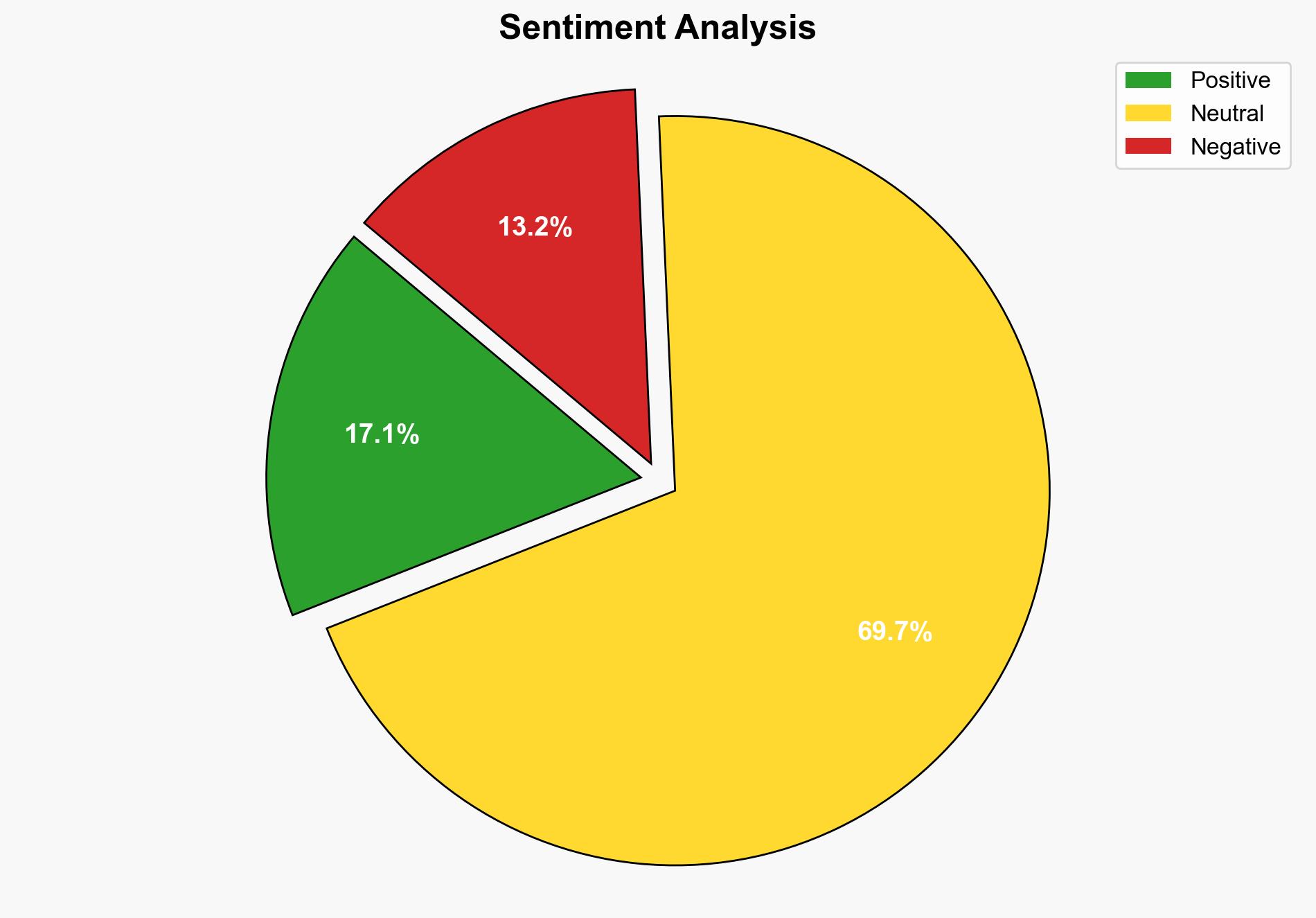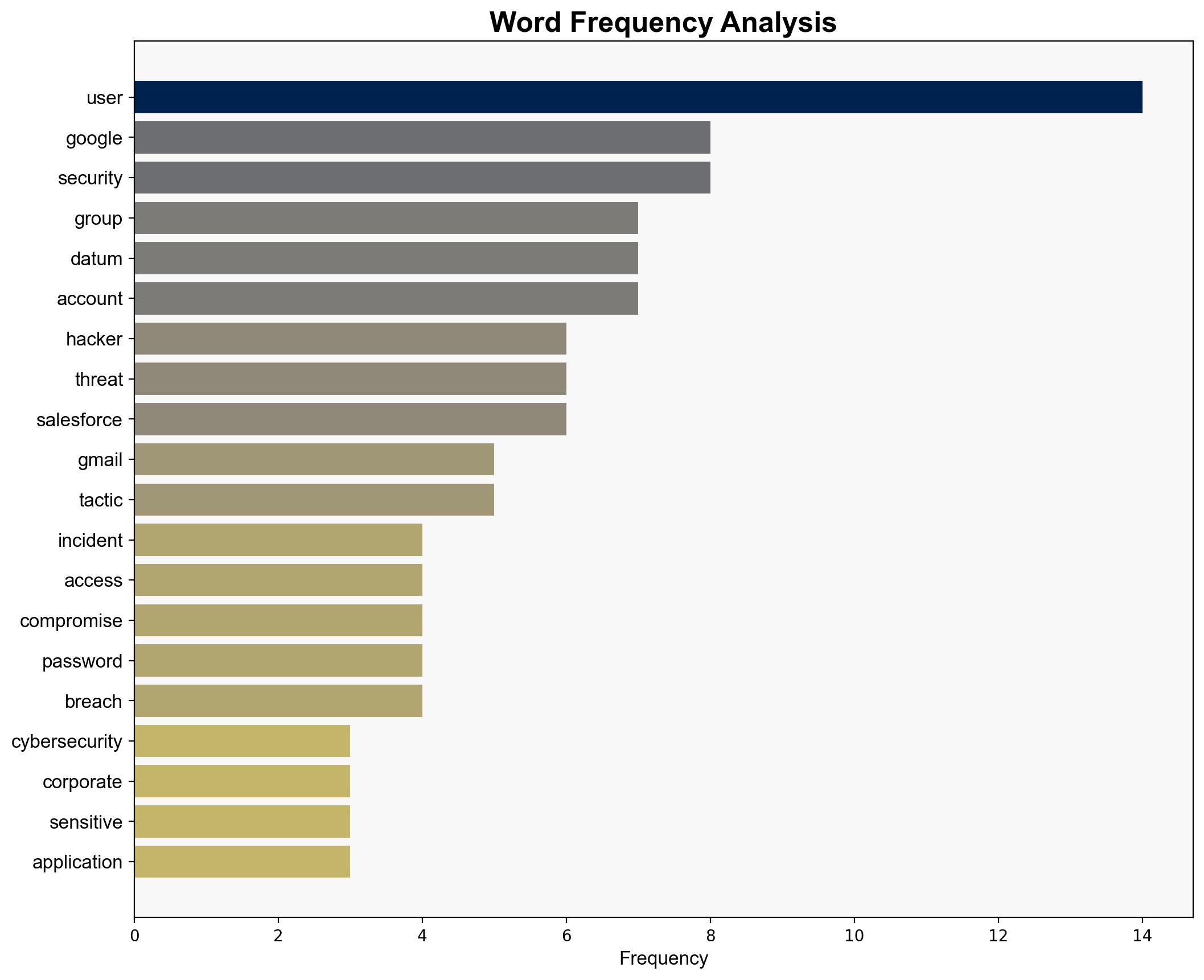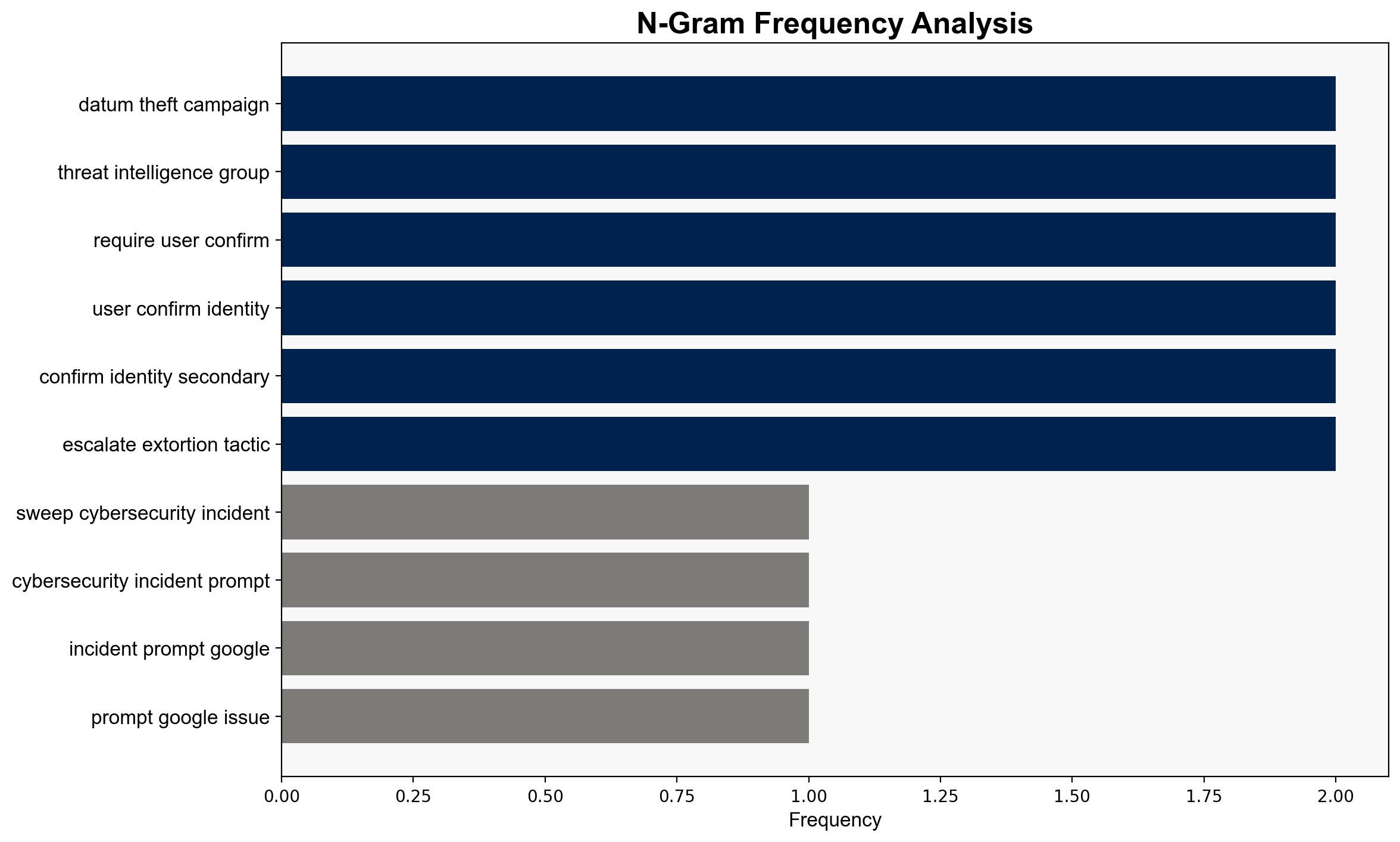Gmail breach has millions wondering what went wrong – Rolling Out
Published on: 2025-08-30
Intelligence Report: Gmail breach has millions wondering what went wrong – Rolling Out
1. BLUF (Bottom Line Up Front)
The most supported hypothesis is that the Gmail breach is part of a coordinated, sophisticated cybercriminal campaign targeting multiple platforms to harvest credentials and extort victims. Confidence level is moderate due to the complexity and evolving nature of cyber threats. Recommended actions include enhancing multi-factor authentication protocols and increasing user awareness of phishing tactics.
2. Competing Hypotheses
1. **Hypothesis A**: The breach is an isolated incident targeting Gmail users, primarily due to a specific vulnerability within Google’s security systems.
2. **Hypothesis B**: The breach is part of a broader, coordinated campaign by a sophisticated hacker group targeting multiple platforms, including Gmail and Salesforce, to harvest credentials and extort victims.
Using the Analysis of Competing Hypotheses (ACH) 2.0, Hypothesis B is better supported. The evidence of coordinated attacks on Salesforce and Gmail, along with the use of OAuth token compromises and phishing tactics, suggests a broader campaign rather than an isolated incident.
3. Key Assumptions and Red Flags
– **Assumptions**: It is assumed that the hacker group has the capability to exploit vulnerabilities across multiple platforms simultaneously. There is also an assumption that the breach was not detected earlier due to sophisticated evasion tactics.
– **Red Flags**: The lack of specific details on how the breach occurred within Google’s systems could indicate either a gap in intelligence or an intentional withholding of information. The potential for cognitive bias exists if analysts focus too heavily on known threat actors without considering emerging groups.
4. Implications and Strategic Risks
The breach highlights the interconnected nature of digital infrastructure, where vulnerabilities in one system can cascade across platforms. This poses significant economic risks due to potential data loss and reputational damage. Cyber risks are elevated as attackers refine their tactics, potentially leading to more aggressive extortion and data theft campaigns. Geopolitically, such breaches can strain international relations if state-sponsored actors are suspected.
5. Recommendations and Outlook
- Enhance multi-factor authentication and encourage regular password updates to mitigate unauthorized access.
- Increase user education on recognizing phishing attempts to reduce susceptibility to credential theft.
- Conduct regular security audits and vulnerability assessments across platforms.
- Scenario Projections:
- **Best Case**: Enhanced security measures prevent further breaches, and user data integrity is maintained.
- **Worst Case**: Continued breaches lead to significant data leaks, financial losses, and erosion of user trust.
- **Most Likely**: Ongoing attempts by cybercriminals necessitate continuous adaptation of security protocols.
6. Key Individuals and Entities
– Google
– Salesforce
– Hacker group known as “ShinyHunter”
7. Thematic Tags
national security threats, cybersecurity, counter-terrorism, regional focus





